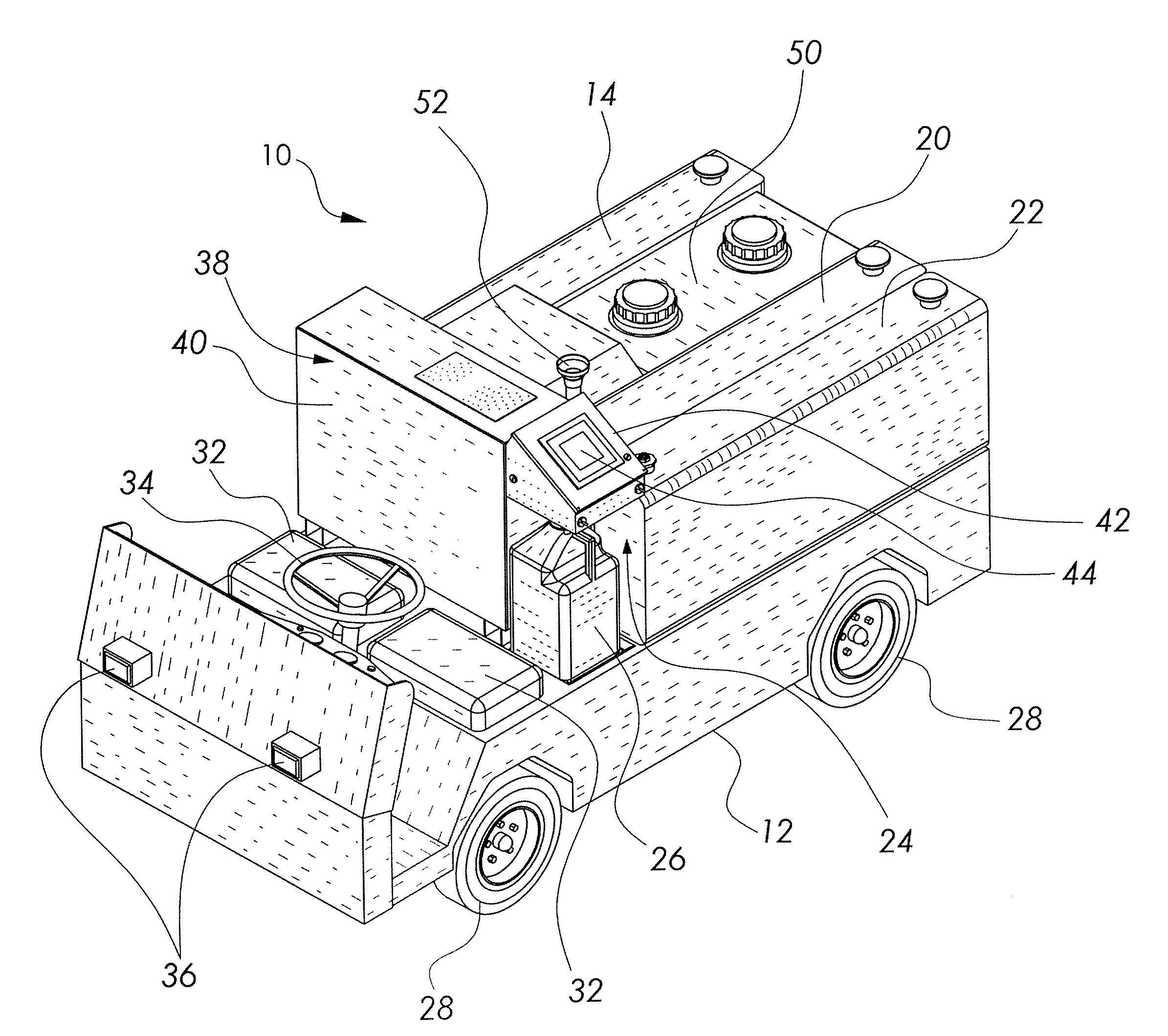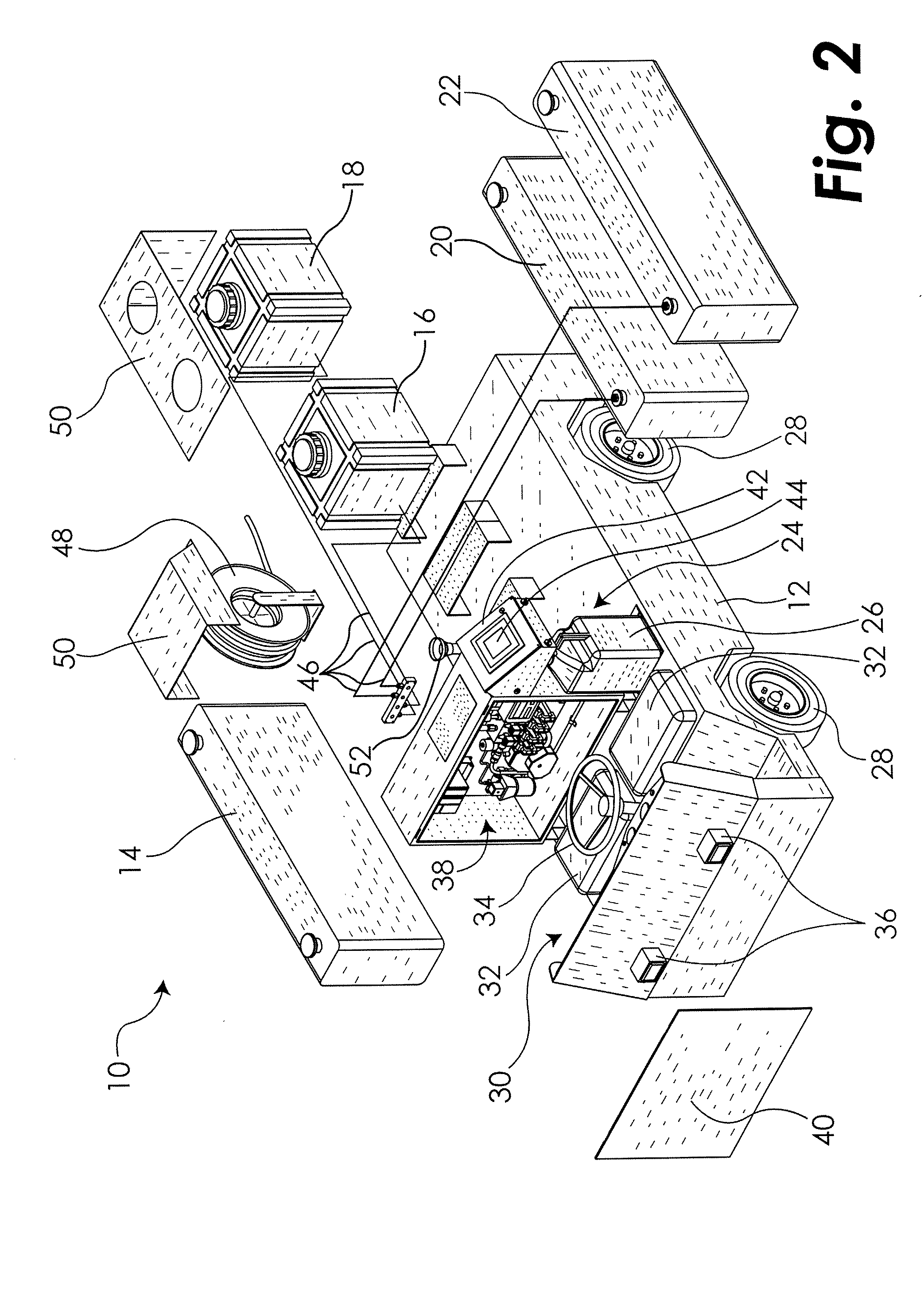Apparatus and method for sampling and correcting fluids
a fluid and apparatus technology, applied in the field of apparatus and method for sampling and correcting fluids, can solve the problems of non-conformity, inconformity, and insufficient fluidity, and achieve the effect of eliminating “guess work”
- Summary
- Abstract
- Description
- Claims
- Application Information
AI Technical Summary
Benefits of technology
Problems solved by technology
Method used
Image
Examples
Embodiment Construction
[0039]The embodiments of the present invention described below are not intended to be exhaustive or to limit the invention to the precise forms disclosed in the following detailed description. Rather, the embodiments are chosen and described so that others skilled in the art may appreciate and understand the principles and practices of the present invention.
[0040]Turning now to FIGS. 1 and 2, mobile chemical dispensing apparatus or unit 10 includes a base or frame 12 to which is mounted several tanks 14, 16, 18, 20 and 22. A wide variety of tanks are suitable, one such tank being available from Park Plastic, part no. SP0012RT, 12 gal. Unit 10 includes a dispensing station 24 that includes a removable container 26 into which a precise amount of corrective fluid with a desired concentration of active chemical(s) is dispensed, as described in further detail below. Unit 10 is mobile, having wheels 28 and a cab 30 including removable seats 32 and steering wheel 34. Although unit 10 is sh...
PUM
| Property | Measurement | Unit |
|---|---|---|
| refractive index | aaaaa | aaaaa |
| refractive index | aaaaa | aaaaa |
| volume | aaaaa | aaaaa |
Abstract
Description
Claims
Application Information
 Login to View More
Login to View More - R&D
- Intellectual Property
- Life Sciences
- Materials
- Tech Scout
- Unparalleled Data Quality
- Higher Quality Content
- 60% Fewer Hallucinations
Browse by: Latest US Patents, China's latest patents, Technical Efficacy Thesaurus, Application Domain, Technology Topic, Popular Technical Reports.
© 2025 PatSnap. All rights reserved.Legal|Privacy policy|Modern Slavery Act Transparency Statement|Sitemap|About US| Contact US: help@patsnap.com



